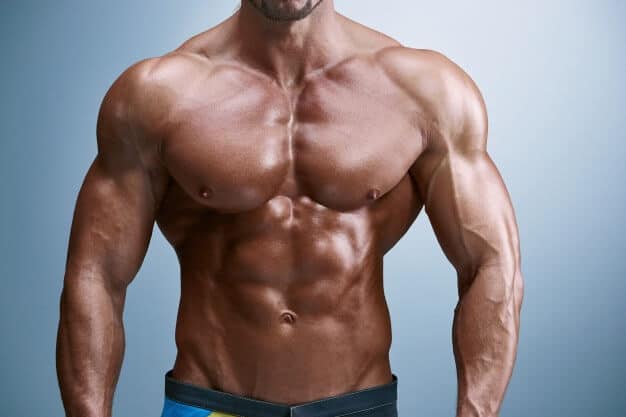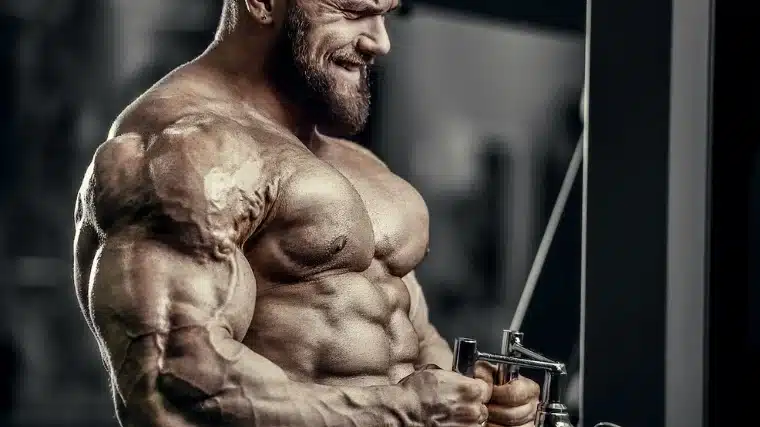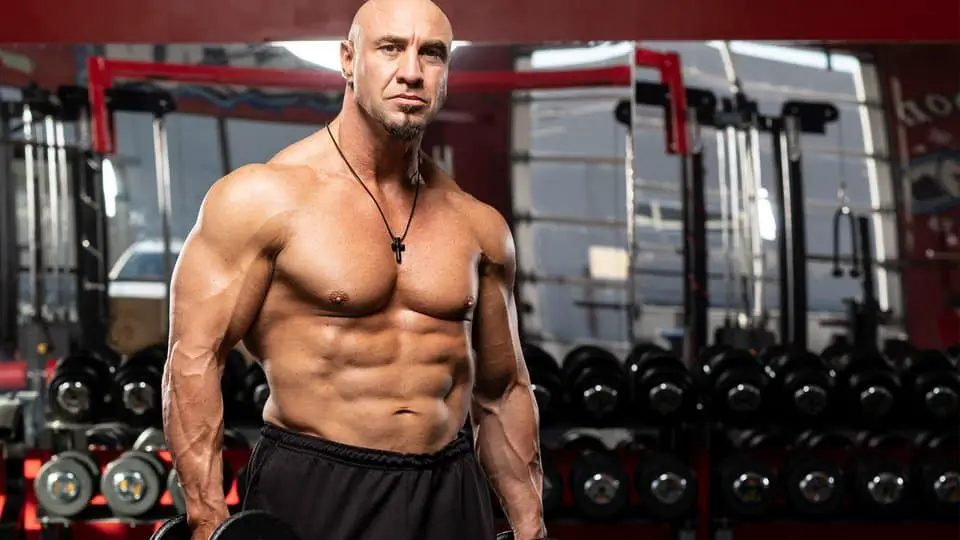Introduction
What Is Conditioning In Bodybuilding: Conditioning in bodybuilding refers to the process of refining and perfecting one’s physical form to achieve a state of peak muscularity, leanness, and definition. It is the art of chiseling the body to reveal the intricate details of muscle fibers and create a symphony of aesthetics that captivates the eye. While often associated with aesthetics, conditioning is also a critical component of performance, as it enhances muscle definition, symmetry, and overall presentation on the stage.
Achieving exceptional conditioning requires a multi-faceted approach, encompassing various elements that contribute to the final result. First and foremost is resistance training, the core of bodybuilding, which involves lifting weights to stimulate muscle growth and development. Consistent and progressive resistance training, targeting different muscle groups, forms the foundation upon which a well-conditioned physique is built.
Nutrition plays an equally vital role in conditioning. Bodybuilders meticulously plan their diets to provide the precise nutrients their bodies need for muscle growth and fat loss. This involves calculating macronutrient ratios, tracking calorie intake, and timing meals strategically to optimize energy levels and recovery. Cardiovascular exercise, often integrated into a bodybuilder’s routine, helps burn excess body fat and improve cardiovascular health. It is a valuable tool in achieving the low body fat percentages necessary for exceptional conditioning.

What is conditioning in muscle building?
What Is Conditioning? In a sports context, conditioning is done to improve muscle endurance and cardiovascular ability. The most common example that probably comes to mind is some sort of aerobic training, such as running, biking, or… water aerobics (come on, you know it would be fun).
Muscle Definition: Conditioning involves reducing body fat levels to reveal the underlying muscle structure. It’s not just about having big muscles; it’s about making them visible through fat loss and toning exercises.
Symmetry: Achieving balanced development among muscle groups is crucial for a proportional physique. This involves working on both primary and secondary muscle groups to avoid imbalances.
Vascularity: Vascularity refers to the visibility of veins underneath the skin. Many bodybuilders aim for increased vascularity as it can enhance the appearance of muscle definition.
Muscle Separation: Conditioning often focuses on creating clear separations between adjacent muscles, such as the separation between the biceps and triceps or the quadriceps and hamstrings.
Overall Muscular Quality: Beyond size, the quality of the muscle tissue is essential. Well-conditioned muscles are not just larger but also possess greater density and hardness.
What is a conditioning workout?
Conditioning is exercising with the goal of increasing your cardiovascular system’s performance. You’re still working muscles hard and it may feel like strength training as your weights still feel ‘heavy’, although you are using much lighter weights during exercises that you normally would use more.
Improved Cardiovascular Health
Conditioning workouts strengthen your heart and lungs, enhancing your body’s ability to deliver oxygen to working muscles and remove waste products. This can lower your risk of heart disease and improve overall cardiovascular health.
Increased Stamina and Endurance
Regular conditioning workouts increase your endurance, allowing you to sustain physical activity for longer periods without fatigue. This can be particularly beneficial for athletes and those engaged in sports or activities requiring prolonged exertion.
Weight Management
Conditioning workouts burn calories and contribute to weight loss or weight maintenance when combined with a balanced diet. They also help regulate appetite and support a healthy metabolism.
Stress Reduction
Physical activity triggers the release of endorphins, natural mood enhancers that reduce stress and promote a positive mental state. Conditioning workouts can be a valuable tool for managing stress and anxiety.
Versatility
Conditioning workouts come in various forms, allowing you to choose activities that align with your interests and goals. Whether you prefer outdoor jogging, cycling, dancing, or indoor HIIT sessions, there’s a conditioning workout for everyone.
Is conditioning good for Building muscle?
Strength conditioning will allow you to increase muscle strength, power and speed and helps you to change your appearance by creating fat loss, which ultimately changes the appearance of your muscles. It is also very easy to design a routine that focuses on your particular conditioning goals.
Muscle Definition: Conditioning aims to reduce body fat levels to make the underlying muscles more visible. Enhanced muscle definition is not just about size but also about clarity and separation between muscle groups.
Symmetry: Balanced development among muscle groups is vital for a proportionate and aesthetically pleasing physique. Neglecting certain muscle groups can lead to imbalances that detract from the overall look.
Vascularity: Many individuals pursuing muscle building also desire increased vascularity, the visibility of veins under the skin. This can add to the aesthetic appeal of well-conditioned muscles.
Muscle Separation: Conditioning workouts often include exercises that promote clear separations between adjacent muscles, such as the definition between the biceps and triceps or the quadriceps and hamstrings.
Muscular Quality: Beyond size, conditioning focuses on the quality of muscle tissue, aiming for density and hardness that give muscles a more sculpted appearance.
When should I do conditioning workouts?
This means try to use high-intensity conditioning on days where you perform strength training (which is also high intensity). And conversely, this means that low-intensity conditioning (LISS work) should be used on days you don’t strength train. This allows the body and CNS to recover better between sessions.
Boosts Metabolism: Morning conditioning workouts can jumpstart your metabolism, helping you burn more calories throughout the day.
Cognitive Benefits: Physical activity in the morning can enhance alertness and mental clarity.
Consistency: Many people find it easier to stick to a morning routine because it’s less likely to be disrupted by unexpected events.
Warm-Up Time: Your body may take a bit longer to warm up and perform optimally in the morning.
Time Constraints: If you have a busy morning schedule, finding time for a conditioning workout can be challenging.
Energy Boost: Midday workouts can provide an energy boost, helping you stay alert and focused throughout the afternoon.
Temperature: It’s typically warmer in the middle of the day, which can be advantageous for outdoor activities.
Scheduling Conflicts: Work or other responsibilities might interfere with midday workouts.
Digestion: Timing your workout too close to a meal may lead to discomfort.
Performance: Your body is generally at its peak performance levels in the late afternoon or early evening, making it an ideal time for intense conditioning workouts.
Social Aspect: Evening workouts can become a social activity, like group classes or team sports.
Is conditioning just cardio?
“Conditioning is cardio, but not as you know it. It’s a hybrid of both strength and cardio training that requires you to work out at a high intensity for shorter periods of time.
Cardiovascular Endurance: Cardio workouts, such as running and cycling, are designed to enhance your heart and lung health. They improve your body’s ability to transport oxygen and nutrients to your muscles, crucial for endurance.
Strength and Muscle Conditioning: Building muscle strength and endurance is another integral part of conditioning. This includes resistance training exercises using weights, resistance bands, or bodyweight exercises to increase muscle mass and power.
Flexibility and Mobility: Conditioning also involves improving your range of motion and joint flexibility. Yoga, stretching, and mobility exercises are essential for overall physical health.
Balance and Coordination: Achieving well-rounded conditioning involves honing your balance and coordination through exercises that challenge these aspects of fitness.
Core Stability: A strong core is essential for overall body stability and posture. Core conditioning exercises target the muscles in your abdomen, lower back, and pelvis.
Agility and Speed: Conditioning can also encompass drills and exercises to enhance agility and speed, which are vital for various sports and physical activities.
How do I start conditioning?
Plan to alternate among activities that emphasize different parts of your body, such as walking, swimming and strength training. Try high-interval intensity training. In high-interval intensity training, you perform short bursts of high-intensity activity separated by recovery periods of low-intensity activity.
Set Clear Goals
Begin by defining your conditioning goals. What are you trying to achieve? Whether it’s improving cardiovascular fitness, building muscle, losing weight, or increasing overall stamina, having clear objectives will help you structure your conditioning plan effectively.
Consult with a Healthcare Professional
Before beginning any new fitness program, it’s advisable to consult with a healthcare professional, especially if you have any underlying medical conditions or concerns. They can provide guidance and ensure that you’re physically ready for the demands of conditioning workouts.
Choose the Right Activities
Conditioning can encompass a wide range of activities, from running and cycling to swimming and circuit training. Select activities that align with your goals and suit your preferences. Variety in your workouts can also keep things interesting and prevent boredom.
Start Slowly
If you’re new to conditioning, it’s crucial to start at an appropriate level of intensity. Begin with shorter workouts and gradually increase the duration and intensity as your fitness improves. Overexerting yourself in the early stages can lead to burnout or injury.
Warm Up and Cool Down
Always include warm-up and cool-down sessions in your conditioning routine. Warming up prepares your muscles and joints for exercise, while cooling down helps your body recover and reduce the risk of injury.
What is conditioning vs strength training?
Strength training challenges your muscles against resistance, such as with weights, resistance bands or bodyweight, while conditioning exercises focus on elevating your heart rate and keeping it that way for an extended period – like with running, biking, swimming and HIIT workouts.
Cardiovascular Endurance: Conditioning workouts often involve activities like running, cycling, swimming, or using cardio machines to elevate heart rate and breathing rate for extended periods.
Interval Training: Many conditioning routines incorporate interval training, where you alternate between high-intensity bursts and short recovery periods.
Duration: Conditioning workouts can vary in duration but typically range from 20 minutes to an hour, depending on individual fitness levels and goals.
Fatigue Resistance: Conditioning helps your body endure prolonged physical effort, reducing fatigue and improving your ability to perform activities for extended periods.
Resistance Exercises: Strength training utilizes resistance, often in the form of weights, resistance bands, or bodyweight exercises, to target specific muscle groups.
Progressive Overload: The principle of progressive overload involves gradually increasing the resistance or weight to continually challenge the muscles and promote growth.
Is conditioning the same as training?
Conditioning is the physiological preparation of the body to help it cope with the demands of training. Through conditioning, we improve fitness, strength and flexibility, thus also mental fitness from a sense of wellbeing. Training deals specifically with the technical aspects of your chosen discipline.
Cardiovascular Endurance: Conditioning often involves exercises like running, cycling, swimming, or using cardio machines to improve heart and lung health.
Interval Training: Many conditioning routines incorporate interval training, alternating between high-intensity bursts and short recovery periods.
Flexibility and Mobility: Conditioning can also include activities like yoga and stretching to improve range of motion and joint flexibility.
Muscular Endurance: Some conditioning exercises focus on building muscular endurance, allowing individuals to sustain physical effort for extended periods.
Resistance Exercises: Training typically includes resistance exercises using weights, resistance bands, or bodyweight exercises to target specific muscle groups.
Progressive Overload: The principle of progressive overload is central to training, involving gradually increasing the intensity, resistance, or volume of exercises to promote muscle growth or strength gains.

Conclusion
Throughout this exploration, we have delved into the multifaceted components that contribute to exceptional conditioning. The heart of bodybuilding lies in the relentless pursuit of perfection through resistance training, where muscles are sculpted and shaped over time. This foundational element is intricately intertwined with the art of nutrition, where precise dietary planning fuels growth, supports recovery, and ensures that the bodybuilder’s physique reaches its full potential.
Cardiovascular exercise, though secondary in nature, plays a critical role in conditioning, aiding in the reduction of body fat and the improvement of overall cardiovascular health. Supplementation, a key ally, assists in meeting the body’s nutritional demands and optimizing performance. Moreover, the concept of “peak week” serves as a testament to the meticulous attention to detail that bodybuilders exhibit. Manipulating water and carbohydrate intake during this phase showcases the dedication required to bring out the intricate details of muscle fibers and veins that define the peak of conditioning.
Beyond the physical aspects, conditioning in bodybuilding is a celebration of the human spirit. It represents the fusion of science and art, where dedication and discipline collide with physiology and nutrition to create living sculptures. It is a journey that transcends mere physicality; it is a testament to the unwavering pursuit of excellence, the embodiment of strength, beauty, and resilience.

